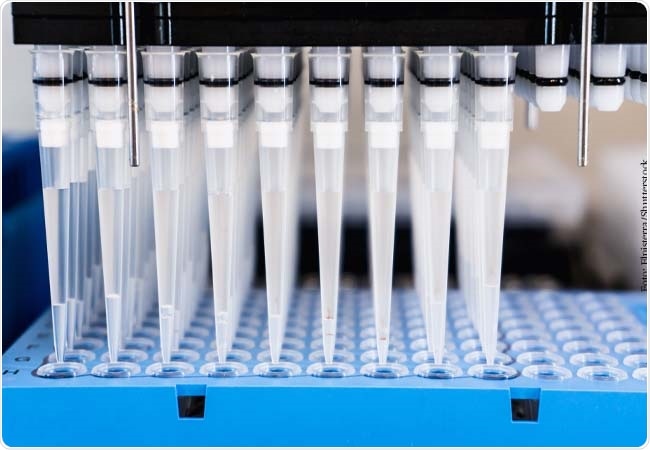Reviewed by Dan Hutchins, M.PhilJun 25 2021
Dr Manual Kaulich and colleagues at Goethe University, Germany, have developed a new 3Cs multiplex approach that permits the effect of genetic alterations in any two genes to be investigated simultaneously in cell cultures. This approach is an extended application of the CRISPR-Cas technology.

The new 3Cs multiplex technique allows millions of two-gene combinations to be tested simultaneously in one experiment. Image Credit: Elpisterra/Shutterstock.
This could lead to the creation of new treatments for cancer, as well as illnesses of the neurological and immunological systems.
Many diseases, including cancer, are caused by genetic flaws. The body can typically correct for a single gene deficiency; the clinical appearance is only the result of a combination of multiple genetic defects.
The 3Cs multiplex technique, which was created at Goethe University Frankfurt and is based on CRISPR-Cas technology, now allows researchers to mimic millions of such genetic defect combinations and examine their effects in cell culture.
These “gene scissors” allow scientists to precisely introduce, remove, and turn off genes. Small pieces of genetic material (referred to as “single guide RNA”) are employed as addresses to direct the gene scissors to certain parts of the DNA, where they become active.
The 3Cs technique, which Goethe University’s Institute of Biochemistry II developed and patented three years ago, has been expanded. Because the RNA elements employed in CRISPR-Cas are created via a circular synthesis, they are spread more uniformly. 3Cs stands for covalently closed circular synthesized.
Any gene in a cell can be directly addressed with a library of such RNA rings to alter or turn it off. The new 3Cs multiplex approach can now manipulate two genes in one cell at the same time.
We can produce ‚address‘ RNA libraries for all conceivable two-gene combinations. This allows up to several million combinations to be tested simultaneously in one experiment.”
Dr Manuel Kaulich, Goethe University
Until now, the cost and effort of such trials were extremely high; the new technique developed by the study group decreases it by a factor of 10, including costs. This is because, thanks to the novel 3Cs multiplex technique, the researchers can build the address libraries in a very uniform and high-quality manner.
Due to the mediocre quality of the CRISPR-Cas libraries previously available, very large experiments always had to be carried out to statistically compensate for any errors that arose.”
Dr Manuel Kaulich, Goethe University
The researchers used the example of several genes engaged in degrading processes to highlight the potential of the novel 3Cs multiplex technique: they looked at nearly 13,000 two-way combinations of genes involved in cell recycling (autophagy). The cell breaks down and recycles “worn-out” cell components with their assistance. Autophagy disruptions can lead to cell proliferation.
Using the 3Cs multiplex technique, we were able to identify, for example, two genes involved in autophagy whose switching off leads to an uncontrolled growth of cells. These are precisely the autophagy mutations that occur in every fifth patient with squamous cell carcinoma of the lung.”
Dr Manuel Kaulich, Goethe University
“In this way, we can search very efficiently in cell culture experiments for genes that play an important role in cancer, and also in diseases of the nervous and immune systems, and that are suitable as possible targets for therapies,” added Dr Kaulich.
Through the university’s technology transfer company Innovectis, the Goethe University research group has applied for a patent for its achievements. The start-up business Vivlion GmbH, which was spun off from the Institute of Biochemistry II with Manuel Kaulich’s assistance, is already selling this technology.
Source:
Journal reference:
Diehl, V., et al. (2021) Minimized combinatorial CRISPR screens identify genetic interactions in autophagy. Nucleic Acids Research. doi.org/10.1093/nar/gkab309.